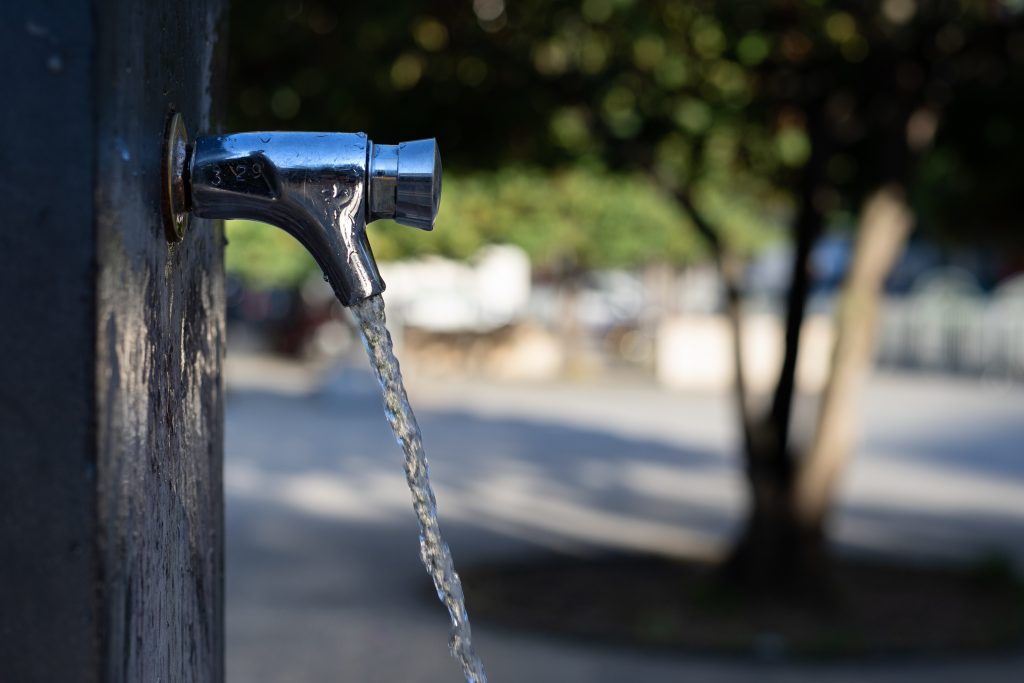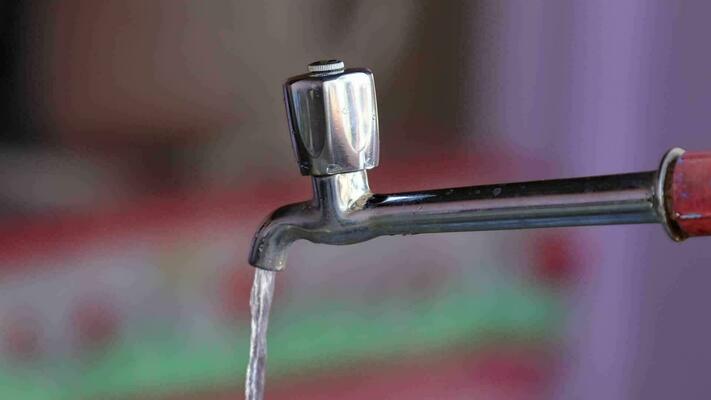Your Impact of Damaged Faucets
Your Impact of Damaged Faucets
Blog Article
Listed here on the next paragraphs you can get additional professional data when it comes to Potential Health Risks Associated With Leaky Faucets.

Introduction
A leaky tap might feel like a small inconvenience, but its effects prolong much past the periodic drip. Comprehending the effects of a dripping faucet is vital for both house owners and the setting. In this write-up, we'll discover the different influences of this typical household concern and why resolving it quickly is crucial.
Causes of Leaky Faucets
Dripping faucets can arise from a variety of variables, including wear and tear, high water stress, and corrosion. Gradually, the constant use faucets can cause damaged seals and gaskets, causing leakages to develop. Furthermore, too much water pressure can put pressure on plumbing fixtures, causing leaks. Rust and rust can also compromise tap elements, making them prone to leakage.
Water Wastefulness
Among the most considerable effects of a dripping tap is water wastefulness. Also a tiny drip can amount to gallons of drainage gradually. This not only drives up water costs but also contributes to water shortage and environmental degradation. Addressing dripping taps immediately is vital for saving this precious resource and minimizing its impact on the earth.
Financial Influence
Along with wasting water, dripping faucets can also have a substantial monetary influence. Raised water costs are a straight repercussion of water wastage, setting you back property owners thousands of dollars each year. Furthermore, the expense of repairing water damages triggered by leaks can be considerable, particularly if left neglected for an extended period.
Ecological Effect
The ecological influence of leaking taps prolongs past water wastefulness. By saving water, property owners can contribute to broader efforts to minimize water shortage and safeguard natural communities. Lasting choices such as rainwater harvesting and water-efficient fixtures can better minimize the ecological footprint of house water use.
Technological Solutions
Improvements in modern technology have led to the development of clever faucets and water-saving tools that aid reduce water waste. Smart taps make use of sensors to spot movement and change water flow as necessary, decreasing waste without sacrificing benefit. Water-saving gadgets such as aerators and low-flow showerheads are also efficient in preserving water without compromising performance.
Global Viewpoints
While dripping taps may appear like a local problem, they add to broader international difficulties such as water scarcity and environment change. In regions already dealing with water anxiety, every decline counts, making leakage avoidance and repair necessary. By taking on water-saving techniques and buying lasting innovations, house owners can play their part in dealing with these pressing global concerns.
Regulative Steps
Federal government laws play a critical duty in reducing the impact of dripping faucets and advertising water conservation. From constructing codes that require water-efficient components to water-saving incentives and discounts, policymakers have a series of tools at their disposal. By implementing and enforcing these regulations, governments can make sure that homeowners focus on water conservation in their daily lives.
Neighborhood Impact
Dealing with leaking faucets needs cumulative initiatives at the neighborhood level. By raising recognition about the importance of water conservation and providing sources for leakage discovery and repair service, regional authorities can empower homeowners to take action. Efforts such as water-saving rebate programs and leakage detection projects can incentivize habits adjustment and promote accountable water usage.
Instance Studies
Real-life instances of the effect of leaky taps highlight the relevance of aggressive maintenance and timely fixings. From water damages to escalating water expenses, the repercussions of overlooking leaks can be serious. By sharing these case studies, home owners can better comprehend the relevance of dealing with dripping faucets quickly.
Educational Campaigns
Educational campaigns play a crucial function in increasing recognition concerning the effects of leaky faucets and promoting water conservation techniques. Through workshops, workshops, and on-line sources, homeowners can learn just how to discover and repair leakages themselves. By empowering individuals with knowledge and devices, educational projects can promote a culture of responsible water use within areas.
Health Worries
Dripping taps can produce conducive environments for mold and mildew and mold development, posing wellness risks to owners. The existence of mold and mildew can intensify respiratory concerns and allergies, especially in prone people. Additionally, water damage arising from leaks can compromise the structural integrity of buildings and result in expensive repairs.
DIY vs. Specialist Repair service
When faced with a leaky faucet, homeowners frequently debate whether to attempt repairs themselves or work with a professional plumber. While do it yourself fixings can conserve money, they might not always address the underlying concern effectively. Specialist plumbers have the experience and devices to detect and deal with leaks appropriately, making sure lasting options and comfort for homeowners.
Safety nets
Preventing leaking taps requires routine upkeep and proactive procedures. Straightforward tasks such as replacing worn-out washers and seals can avoid leakages from developing. Additionally, updating to top notch components and reducing water pressure can help prolong the lifespan of taps and decrease the threat of leaks.
Verdict
Finally, the effects of a dripping faucet expand far past the periodic drip. From water wastefulness and increased water bills to health and wellness concerns and environmental effect, the repercussions of overlooking leaks can be significant. By attending to dripping taps promptly and adopting water-saving methods, home owners can reduce these effects and add to a much more sustainable future.
Why You Shouldn’t Ignore a Leaky Faucet in Your Home
What Causes a Leaky Faucet?
Various factors can cause a leak, from loose and worn-out parts to corrosion. Your faucet has four essential components from which most plumbing issues will stem: the O-ring, the valve seat, the washer and the gasket.
What Is an O-Ring?
The O-ring is a stem screw that fastens parts of the faucet in place, preventing water from leaking out of the spout. Depending on your faucet type, the stem might have multiple O-rings. Water will drip from the faucet’s handles and base if this part breaks or deteriorates.
What Is a Valve Seat?
The valve seat controls the flow and temperature of the water. Found at the base of the handle, it works as a seal for the faucet’s stem. The valve seat ensures the water is allowed to flow or is blocked as the handles dictate. You’ll know it’s malfunctioning when water leaks from your faucet’s sides.
What Is a Gasket?
The gasket is found between the water inlet and the valve stem. It creates a seal between the faucet and the sink, holding its joints by aerators attached to the stem’s head. Water will trickle out from the base if the gasket isn’t working.
What Is a Washer?
The washer secures the handles and prevents leakage, serving a similar purpose to the O-ring. While the O-ring is ordinarily round and made from an elastic material, such as rubber, the washer is square-shaped and composed of brass, copper and other hard metals. If it malfunctions, corrodes or has been improperly installed, water will leak out of the handles, causing that incessant faucet drip.
Why Is a Leaky Faucet Dangerous?
A leaky faucet left alone for too long can have significant consequences.
Pest Infestations
Since bugs and rodents gravitate towards the scent of water, a leaky faucet will draw pests to your sink. Both are looking for leaks accessible through crawl spaces, which a faucet provides. If you leave water dripping for too long, you run the risk of an infestation.
Rust
If one of the faucet parts has started to corrode, the resulting rust can spread to your pipes and valves with startling speed. The rust might even lead to cracks or other impairments, resulting in more severe plumbing issues.
Your sink could also sustain damage from a leaky faucet. The water in your tap possesses sparse elements of calcium and iron that can stain your sink with repeated and prolonged exposure. Once those elements in the water have been open to the air for some time, your sink will start to rust, creating marks that can be difficult to remove.
https://www.tomsmechanical.com/blog/why-you-shouldnt-ignore-a-leaky-faucet-in-your-home

Hopefully you liked our section about Potential Health Risks Associated With Leaky Faucets. Thank you for taking a few minutes to read our piece of content. Don't hesitate to set aside a second to distribute this blog entry if you liked it. We enjoy your readership.
Report this page